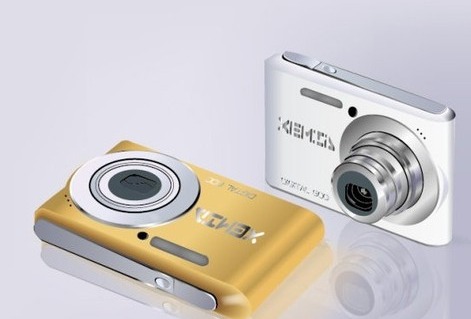Oval Series Sensor Automatic Dustbin Auto Trash Can,Oval Series Sensor Automatic Dustbi,Oval Series Sensor Dustbin,Oval Series Sensor Office Dustbin NINGBO ZIXING ELECTRONIC CO.,LTD. , https://www.zixingautobin.com According to a report of the Wall Street Journal on August 2, Beijing time, the industry data from the Camera Industry Association of the Tokyo Industry Association showed that global shipments of card cameras had plummeted by 42% in the first five months of 2013.
According to a report of the Wall Street Journal on August 2, Beijing time, the industry data from the Camera Industry Association of the Tokyo Industry Association showed that global shipments of card cameras had plummeted by 42% in the first five months of 2013.
This change has forced Fujifilm and Matsushita, the world's largest camera makers, to cut product lines and adjust products. As the profits of classic card machines have shrunk, some companies have chosen to focus on higher-end cameras.
Fujifilm's Vice President Tanaka Hiroshi said that the entire industry has recognized that the market is changing, and the question is what we can do about it. Fujifilm plans to cut the product lineup from the 20 products last year by half, limiting the number of products with lower prices and introducing higher-end cameras. Matsushita said it plans to reduce the number of entry-level models, the goal is to reduce the fixed cost of the camera business by 60% in the next three years.
Olympus’s image business suffered a loss of 23 billion yen (about 235 million U.S. dollars) in its financial business last fiscal year. The seventh-ranked camera maker plans to eliminate the lowest-priced product line and reduce the number of models. Olympus predicts that in the fiscal year ending in March next year, global shipments will be 2.7 million units, which is only half of the previous fiscal year.
Canon lowered its full-year profit forecast by 10% due to a decline in camera sales. In January this year, Canon forecasted that its card machine sales will reach 17 million in 2013, and its sales target will be reduced to 14.5 million units in April and 14 million again last week. The company also reduced the sales target for 2013 interchangeable lens cameras from 9.2 million to 9 million.
According to data from market research firm IDC, the global digital camera market may shrink to only 102 million units this year, and it will be about 144 million at the peak of 2010. The background in this situation is that the number of people taking pictures has soared in the form of an index. Fujifilm pre-estimates that the number of photographs taken each year with smartphones, digital cameras and other devices is as high as 1.6 trillion. In contrast, about 100 billion photographs were taken every year during the heyday of film cameras around 2000.
The report pointed out that although connecting to the Internet via Wi-Fi is already a common feature of many consumer electronics products, digital cameras are still largely "unconformable" devices. IDC data shows that only one sixth of digital cameras shipped this year have Wi-Fi functionality.
Mitsuo Matsudaira, head of Canon's compact digital camera business, said that in the past, Japanese consumers would wait for three years before purchasing new cameras. Now they will wait for nearly five years. The goal of Canon is to work with smartphones instead of competition. He said: "I used to work on cameras to take beautiful photos, but we started to see people sharing photos using smartphone cameras. People's interests began to turn in that direction. We don't intend to compete with smart phones."
March 15, 2020